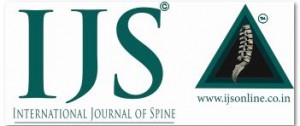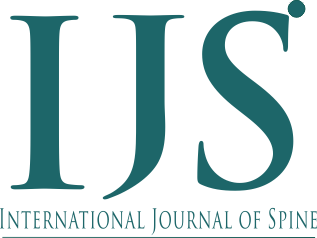Titles, Money Or Academics: What Drives the Orthopaedic Surgeon in India- Tracing the Happiness and Productivity of Indian Orthopaedic Surgeons
Volume 7 | Issue 2 | July-December 2022 | Page: 07-13 | Saijyot Raut, Tushar Agrawal, Rajendra Sakhrekar
DOI: https://doi.org/10.13107/ijs.2022.v07i02.38
Authors: Saijyot Raut [1, 2], Tushar Agrawal [3, 4], Rajendra Sakhrekar [5, 6]
[1] One Spine Clinic, Mumbai, Maharashtra, India.
[2] Department of Orthopaedics, SL Raheja Hospital, Mumbai, Maharashtra, India.
[3] Department of Orthopaedics, Aastha Hospital, Mumbai, Maharashtra, India.
[4] Department of Orthopaedics, MGM Hospital, Navi Mumbai, Maharashtra, India.
[5] Division of Orthopaedic Surgery, The Hospital for Sick Children, Toronto, ON, Canada.
[6] Division of Orthopaedic Surgery, University of Toronto, Toronto, Canada.
Address of Correspondence
Dr. Rajendra Sakhrekar
Division of Orthopaedic Surgery, University of Toronto, The Hospital for Sick Children, 555 University Avenue, Toronto, ON, Canada M5G 1X8.
E-mail: raj.sakhrekar@gmail.com
Abstract
Background- Happiness and productivity are two interlinked parameters. Orthopaedic surgery is physically demanding, and often Orthopaedic surgeons need to work for long unpredictable hours. In this study, the factor impacting the happiness and success of Orthopaedic surgeons will be delineated. Moreover, we will try to address different characteristic features of Orthopaedic practice at different geographical locations of the country.
Material and methods- This is a randomized cross-sectional survey that was conducted among practicing Orthopaedic surgeons from Tier 1, Tier 2, and Tier 3 cities of India. We hypothesized that an annual income of Indian Rupees Four Lakhs would be likely to contribute positively to an Orthopaedic surgeon’s productivity. Additionally, we hypothesized that surgeons involved in research, teaching, and conferences would be more likely to be satisfied with their personal and professional life. Participants were selected through random sampling and a questionnaire was sent to them that explored the personal and professional happiness of the participants. This questionnaire was made by four surgeons from differing backgrounds with respect to age, training, city of practice and area of interest and was subsequently reviewed by four peers. The questionnaire contains a total of 18 questions that covered a wide range of characteristics including age, marital status, practice characteristics, quality of life, calorie intake, exercise frequency, burnout, career satisfaction, and monetary satisfaction.
Result- A total of 298 participants were responded in the survey. Among these participants 135 (45.3%) were from Mumbai, 86 (28.86%) were from Bangalore and 77 (25.84%) were from UP. The happiness quotient of Orthopaedic surgeons was shown to be significantly associated with the city where they practiced (p-value= 0.004), age of the surgeons (p-value=0.001), the setup of postgraduate training (P-value=0.004), and the frequency of physical exercise (P-value=0.019). Among the respondents 71.81% were found to have completed their training from a government hospital and 79.05% were found to be happy in their present life. However no statistically significant difference in happiness was observed between surgeons who had undergone training abroad and those that hadn’t among the respondents. It was also reported that surgeons associated with teaching institutions expected a lower salary and this association was also found to be statistically significant (P Value=0.038).
Conclusion- This study reported that practice in a Tier 1 city, age greater than 60 years, post-graduate training in a government institute, higher frequency of physical exercise (thrice a week to daily), the consciousness of daily caloric intake, and an involvement in the organization and management of major conferences and other academic and research activities were some of the factors that contributed to the happiness of Orthopaedic surgeons in India.
Keywords: Happiness, Orthopaedic surgeon, Age, Productivity, Exercise
References
1. Ford BQ, Dmitrieva JO, Heller D, Chentsova-Dutton Y, Grossmann I, Tamir M, et al. Culture shapes whether the pursuit of happiness predicts higher or lower well-being. J Exp Psychol Gen. 2015 Dec;144(6):1053–62.
2. Klein G, Hussain N, Sprague S, Mehlman C, Dogbey G, Bhandari M. Characteristics of highly successful orthopedic surgeons: a survey of orthopedic chairs and editors. Can J Surg. 2013 Jun 1;56(3):192–8.
3. Sargent MC, Sotile W, Sotile MO, Rubash H, Barrack RL. Quality of Life During Orthopaedic Training and Academic Practice: Part 1: Orthopaedic Surgery Residents and Faculty. J Bone Jt Surg-Am Vol. 2009 Oct;91(10):2395–405.
4. Shanafelt TD, Balch CM, Bechamps GJ, Russell T, Dyrbye L, Satele D, et al. Burnout and Career Satisfaction Among American Surgeons: Trans Meet Am Surg Assoc. 2009;127:107–15.
5. Kp W, Ak K-P, Jyl O. Orthopaedic Resident Burnout: A Literature Review on Vulnerability, Risk Factors, Consequences and Management Strategies. Malays Orthop J. 2019 Jul 1;13(2):15–9.
6. Simons BS, Foltz PA, Chalupa RL, Hylden CM, Dowd TC, Johnson AE. Burnout in US military orthopedic residents and staff physicians. Mil Med. 2016;181(8):835–839.
7. Definition of CULTURE OF SUCCESS [Internet]. [cited 2020 May 24]. Available from: https://www.merriam-webster.com/dictionary/culture+of+success
8. Peckham C. Medscape Physician Lifestyle & Happiness Report 2018 [Internet]. 2018 [cited 2020 May 24]. Available from: //www.medscape.com/slideshow/2018-lifestyle-happiness-6009320 Surgeons AA of O. AAOS orthopaedic surgeon census. 2016.
10. Saleh KJ, Quick JC, Conaway M, Sime WE, Martin W, Hurwitz S, et al. The prevalence and severity of burnout among academic orthopaedic departmental leaders. JBJS. 2007;89(4):896–903.
11. Andrews JR. What I have learned about being successful as an orthopedic surgeon. J Shoulder Elbow Surg. 2019 Jan;28(1):203–4.
12. Shanafelt TD, Boone S, Tan L, et al. Burnout and satisfaction with work-life balance among US physicians relative to the general US population. Arch Intern Med. 2012; 172: 1377-1385. 2012/08/23.
13. Thomas NK. Resident burnout. JAMA. 2004; 292: 2880-2889. 2004/12/16.
14. Arora M, Diwan AD and Harris IA. Burnout in orthopaedic surgeons: a review. ANZ J Surg. 2013; 83: 512-515. 2013/06/26.
15. Ishak WW, Lederer S, Mandili C, et al. Burnout during residency training: a literature review. J Grad Med Educ. 2009; 1(2): 236-42.
16. Zheng H, Shao H and Zhou Y. Burnout Among Chinese Adult Reconstructive Surgeons: Incidence, Risk Factors, and Relationship With Intraoperative Irritability. J Arthoplasty. 2018; 33: 1253-1257. 2017/12/15.
17. Sargent MC, Sotile W, Sotile MO, et al. Stress and coping among orthopaedic surgery residents and faculty. J Bone Joint Surg Am. 2004; 86-a: 1579-1586. 2004/07/15.
18. Sargent MC, Sotile W, Sotile MO, et al. Managing stress in the orthopaedic family: avoiding burnout, achieving resilience. J Bone Joint Surg Am. 2011; 93: e40. 2011/04/22. DOI: 10.2106/jbjs.j.01252.
| How to Cite this Article: Raut S, Agrawal T, Sakhrekar R | Titles, Money or Academics: What Drives the Orthopaedic Surgeon in India- Tracing the Happiness and Productivity of Indian Orthopaedic Surgeons | International Journal of Spine| July-December 2022; 7(2): 07-13| https://doi.org/10.13107/ijs.2022.v07i02.38 |


